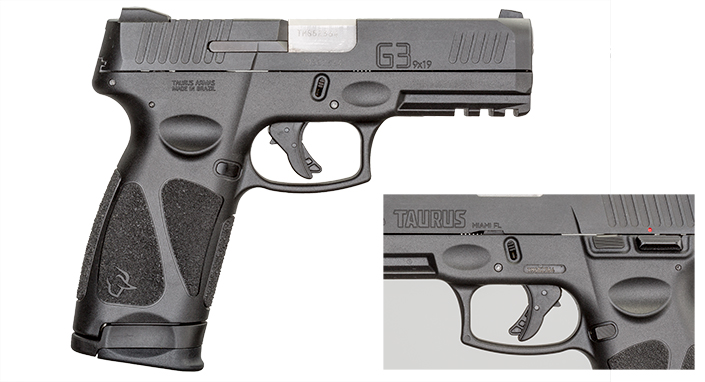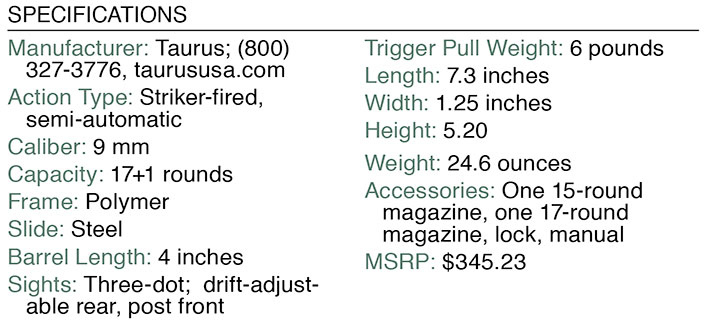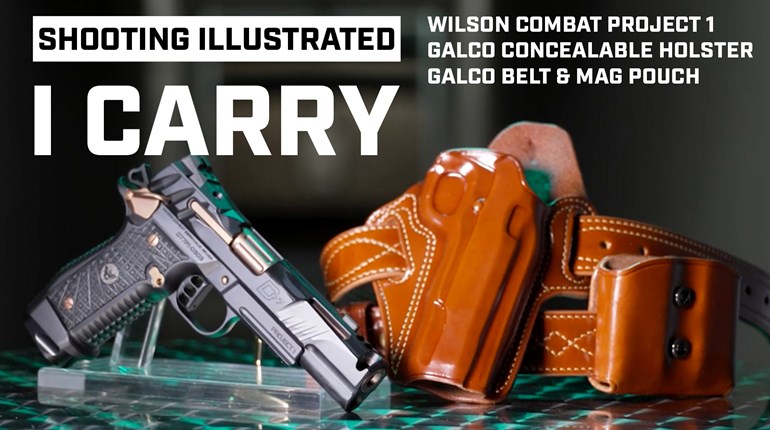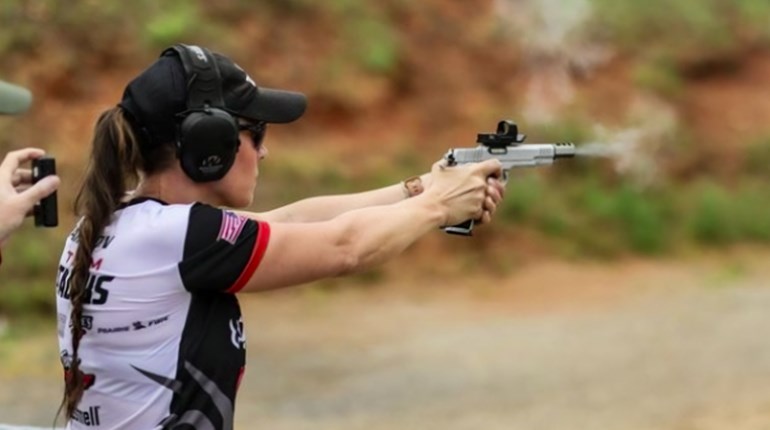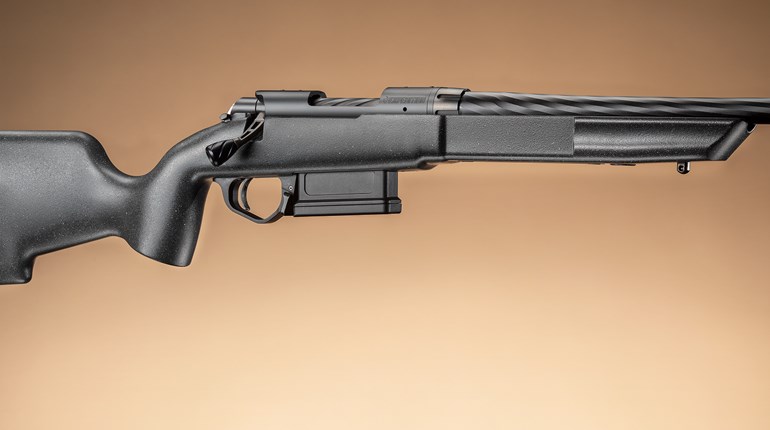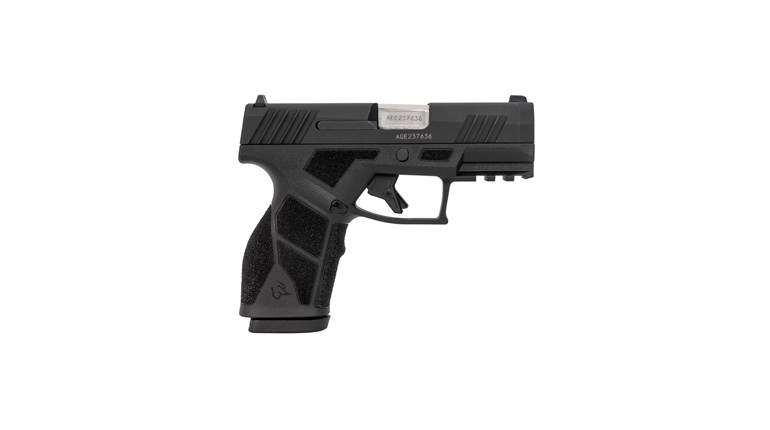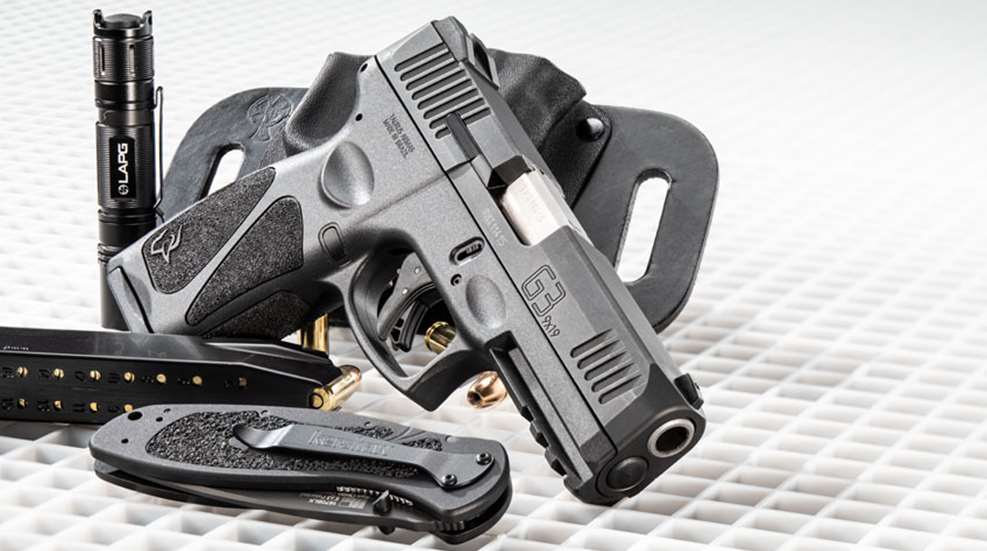
Gun manufacturers have been chopping down duty-size semi-automatic pistols to make them smaller and more concealable for about as long as there have been duty-size, semi-automatic pistols to chop. The earliest one I can think of on this side of the pond, at least, was Colt cutting the barrel length down on its Model 1902 Commercial .38 ACP to make the Model 1903 Pocket Hammer. (Not to be confused, of course, with the 1903 Pocket Hammerless.)
The pistol on these pages is something of a rarity in the industry, since it’s the result of movement in the other direction. The G3 from Taurus is basically the company’s G2 subcompact after a growth spurt.
The G2 has been a tremendous sales success for Taurus. Launched in the early twenty-teens as an evolution of Taurus’ Millennium line, the very attractive price point and compact size of the G2 ensured it would move well on the gun counters of America.
Thing is, a subcompact pistol in a service caliber may be a dandy concealed-carry, personal-protection appliance, but it’s rarely the sort of gun a person would take to the range to while away an afternoon of target shooting. Similarly, unless the competition you’re shooting in has a special division for subcompacts, it’s discouraging to try and compete with one in most action-pistol games.
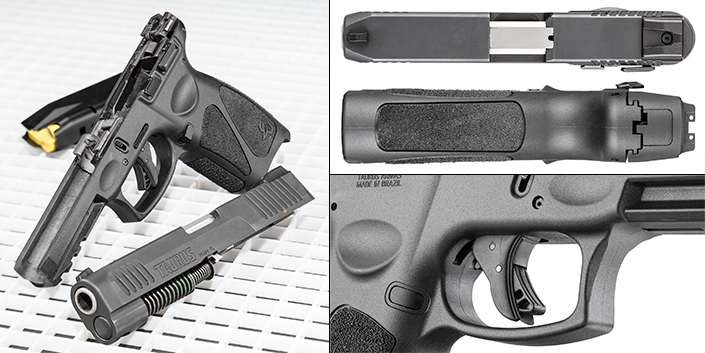
So, in a reversal of the normal process, Taurus took its very successful G2 and gave it the stretch treatment. The result is the new G3, which is marketed by Taurus as a full-size pistol. Strictly speaking, it’s probably more accurately described as a compact, with its 4-inch barrel and 15-round, flush-fit magazine, dropping it squarely into Glock G19 territory.
The differences between the new pistol and its progenitor start at the top, with a slide that is obviously a stretched version of the G2, down to the shape and contour of the cocking serrations. Out toward the muzzle end, however, where the G2 has deep scallops along the top edges of the slide, the G3 features a more conventionally contoured top and a set of five forward-angled cocking serrations of the same pattern as the ones at the rear. The nose of the slide is nicely beveled to more easily find its way into holsters.
The sights, like those on the G2, feature three white dots from the factory. It’s just white paint—nothing fancily fiber optic or radioactive—but that’s to be expected in an aggressively entry-level-price pistol. The good news is that upgrades are easy, since the front sight is attached with a threaded tenon like the front sight on a Glock, and the rear can be drifted out of its dovetail after loosening a single setscrew.
“Loosening a single setscrew” is also how you adjust the rear sight for windage, and the only concession to elevation adjustments is that the owner’s manual indicates that Taurus makes front sights in a range of four different heights.
The dustcover of the frame is extended to match the slide, and this means the G3’s accessory rail has rather more usable real estate than the smaller pistol. It’s a Picatinny-style rail and accommodated a range of SureFire and Streamlight weaponlights I added to it with no issues. (The irony of attaching a SureFire XH35 to the G3, thereby doubling the handgun’s retail price, did not pass unnoticed.)

Aft of the rail, the frame features the oval indentations that Taurus calls “memory pads.” These are primarily intended to give you a tactile reference point where you can park the tip of your trigger finger when you are not actually shooting, assuming you don’t use the trigger finger on the slide or touching the ejection port for your tactile index. The one on the left side of the gun is where my support-hand thumb tended to find itself while firing, so the indentations can serve multiple functions and make the pistol a bit more accommodating to southpaws.
Moving toward the rear of the frame from the memory pads, you come to the nubbins of the gun’s takedown lever (“disassembling latch” in Taurus parlance), which functions pretty much identically to that found on a Glock.
Like the slide, the grip is pretty much a stretched-out version of the one on the G2. It’s identical in width, just longer to accommodate the 15-round magazine (which will function in a G2). The grip features areas of texturing on both sides, as well as the frontstrap and backstrap. It’s grippier than smooth plastic, but it’s not very aggressive. I would personally add some skateboard tape or the like, but that’s very much a personal-preference thing.
The magazine release is a conventional button, and non-reversible, so southpaws will be using their trigger finger to actuate it. The slim, low-profile, manual safety lever is also single-sided. As a matter of fact, the only concession the bare-bones G3 makes to the modern trend of ambidexterity in pistols is the inclusion of the aforementioned memory pads on both sides of the gun. This is probably the handgun-market equivalent of an automobile having vinyl floormats and rollup windows.
Having just made that wisecrack, I’ll point out that I was in for a surprise when I hit the magazine release. The slim, metal, double-stack magazine dropped freely from the pistol and, as I went to load it up for its first range session, I was caught off guard by the unit’s quality.
At this price point, it’s not uncommon to encounter magazines that feel a little flimsy and which feature feed lips that, while technically not actually shaving-sharp, could probably be made that way with not too many strokes of a whetstone. Not the G3’s magazines, though. These were quite well-finished, Italian-made Mec-Gar units that felt substantially constructed and had nicely dressed feed lips. You could thumb rounds into these all morning and not come away with raw spots on your digits. Points to Taurus for this detail.
The gun ships in a variety of magazine combinations, from a pair of 10-rounders for ban-state residents, through dual flush-fit 15-rounders, to the configuration the test gun shipped with, which was one 15-round magazine and a 17-round mag with a polymer sleeve around the base to fill in the space between the bottom of the grip and the floorplate. The sleeve is textured to match the grip.
According to Taurus’ website, the MSRP for this particular setup is $345.23, with street prices commensurately lower. Seems like a really good deal; so how does it shoot?
When I picked up the gun at my local gun shop (Indy Arms Company), I had some ammunition with me, so I decided to go straight to the range. In the first 100 rounds of Speer Lawman 147-grain ball, I had two failures of the slide to close completely. The symptom was a dead trigger and the rear of the slide just slightly too far back. I was able to tell what was wrong at a glance and pushed the slide closed with my thumb and resumed shooting, but a total novice might have been a little more confused, since the gun looked “normal” to the casual glance.
Once home, the problem was apparent: The gun had arrived drier than the Oklahoma panhandle during the Dust Bowl. It was more or less entirely bereft of lubricant. A little judicious oiling was in order. Once I’d lubricated it to factory specifications, the next 700 (705, if we’re being precise) rounds were largely uneventful.
The tabbed trigger pull is long, with an almost weightless takeup, then a sudden spongy wall before breaking somewhat vaguely at 4.5 to 5 pounds on the test gun. I would have sworn it was heavier, but it was at least usable. By the end of the test I was monotonously ringing the 8-inch steel plates at my club from 20 yards. Hey, the street price is under three bills some places; if you want a Wilson Combat trigger, you gotta buy the Wilson Combat pistol (or at least one modified by Wilson’s shop).
The G3 lockwork also allows a double-action pull, which you’ll only ever experience if you have a dud primer. One of those never occurred during the test, but it wouldn’t have been a big deal, since the DA pull on the test gun measured only a bit more than 1.5 pounds more than the SA pull, at just shy of 6 pounds. The only really noticeable difference to the shooter is the DA pull doesn’t have the long and weightless takeup.
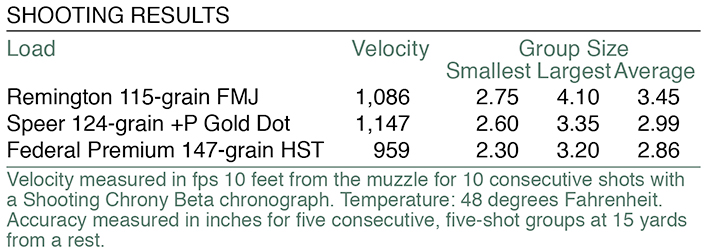
I wound up being pleasantly surprised by the Taurus G3. It functioned fine with the 115- and 124-grain jacketed hollowpoints I fed it, and all sorts of ball ammunition. The only other feeding issue it had was with 147-grain Federal HST, with its long overall length and blunt profile. While chronographing, a couple of those nosedived into the pistol’s feed ramp.
For someone on a tight budget looking for a new gun with a lifetime warranty, the G3 is really a reasonable choice. It’s not a luxury blaster, but it’s not marketed that way. It’s for anything the G2 is a bit too small for, from action games to house gun to capacious carry gun.
